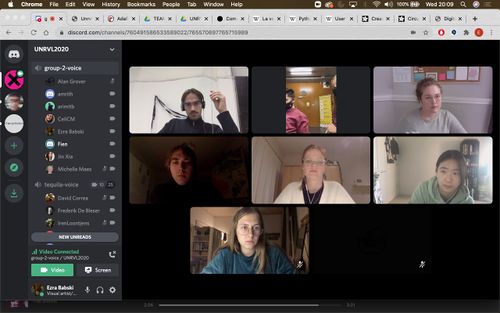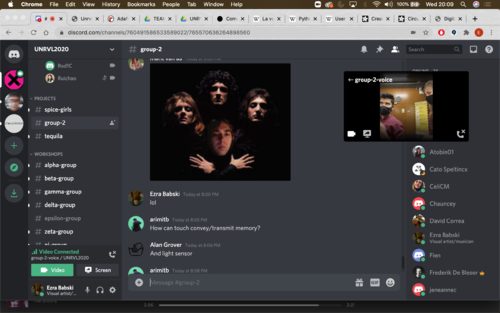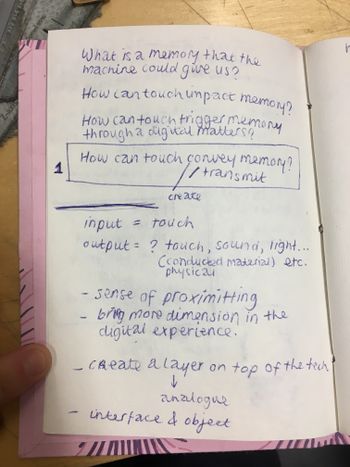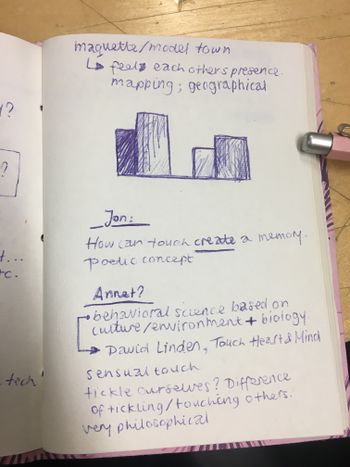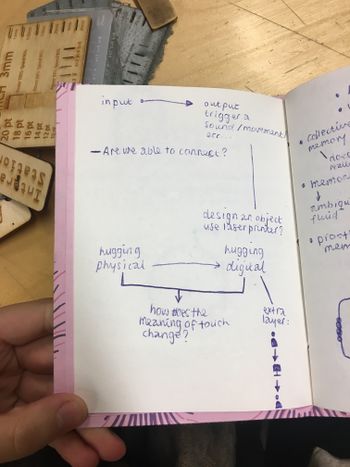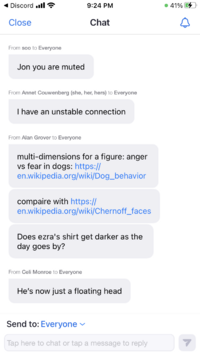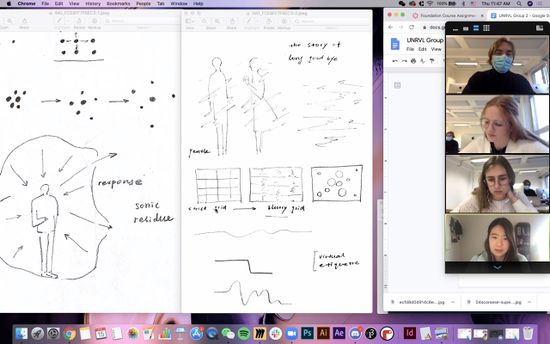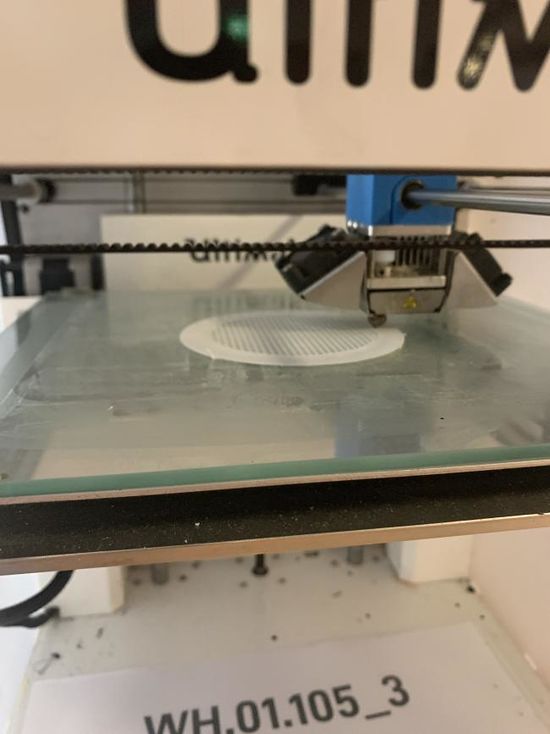Difference between revisions of "UNRVL9-Project2"
EzraBabski (talk | contribs) |
EzraBabski (talk | contribs) |
||
| Line 144: | Line 144: | ||
| | | | ||
<gallery mode="slideshow"> | <gallery mode="slideshow"> | ||
| − | + | Marit-poster1.jpg | |
| − | + | Marit-poster2.jpg | |
| − | |||
| − | |||
| − | |||
</gallery> | </gallery> | ||
|} | |} | ||
<div style="font-size:12px;font-family:Cochin;display:block;padding:2px;color:black;background:linear-gradient(to bottom left,#edFde6,#d8F5c7);"> | <div style="font-size:12px;font-family:Cochin;display:block;padding:2px;color:black;background:linear-gradient(to bottom left,#edFde6,#d8F5c7);"> | ||
Revision as of 12:47, 16 October 2020
Group 2
Fluidity of Presence: Ways of Being Together in the Digital Age
Can we communicate the complex experience of presence and absence, nearness and distance that is a feature of embodied existence (in short, the spectrum of "being together") by designing hybrid analogue/digital technologies that eschew stale binaries of online/offline connection?
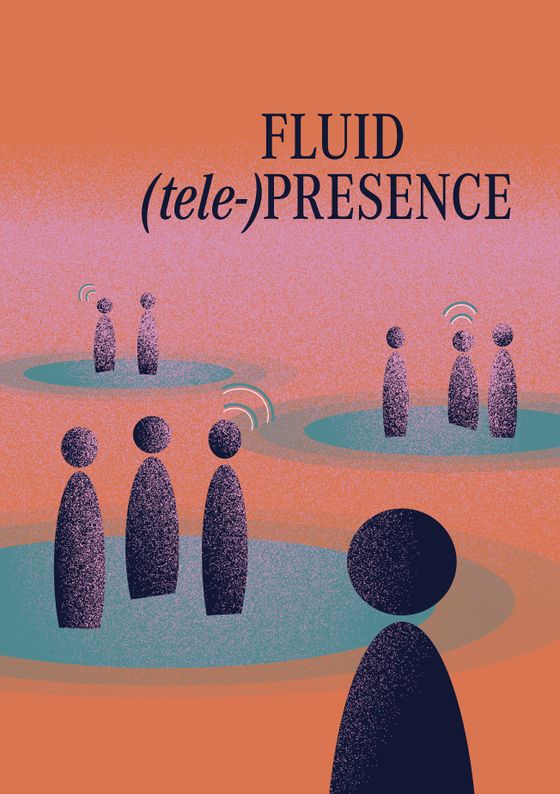
|
Digital presence takes many forms. Regardless of whether we are “plugged in,” our digital footprint manifests in the digital ecosystem as a constantly expanding network of traces, data artefacts, biometric residues and transaction histories. Viewed from this angle, the conventional, binary distinction between online/offline states ceases to make sense; indeed, given the extent of our current dependence on digital technology, almost all of us are always digitally present, if only in a hyperfragmented way. It is more accurate, therefore, to insist on the existence of a spectrum of "online" states.
|
|
Monday Oct 12
[...]
|
|
DISCORD!
|

